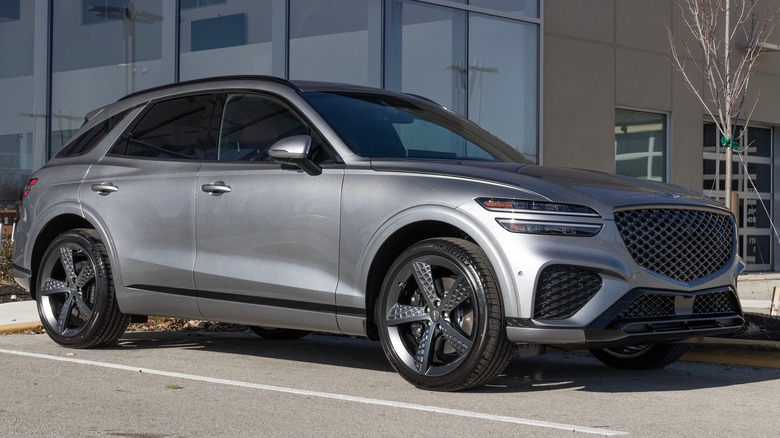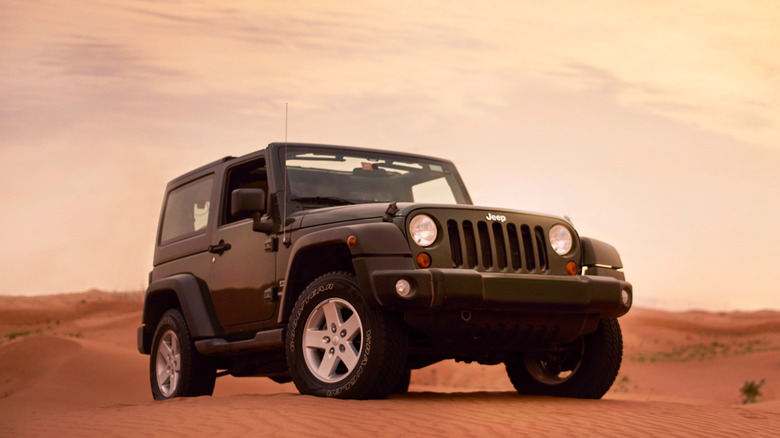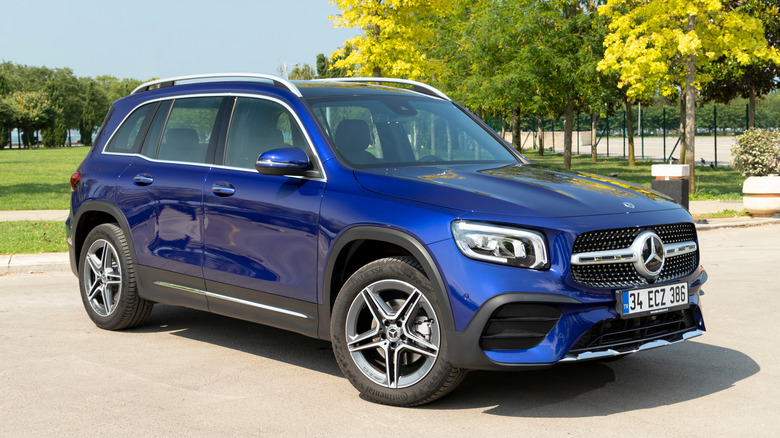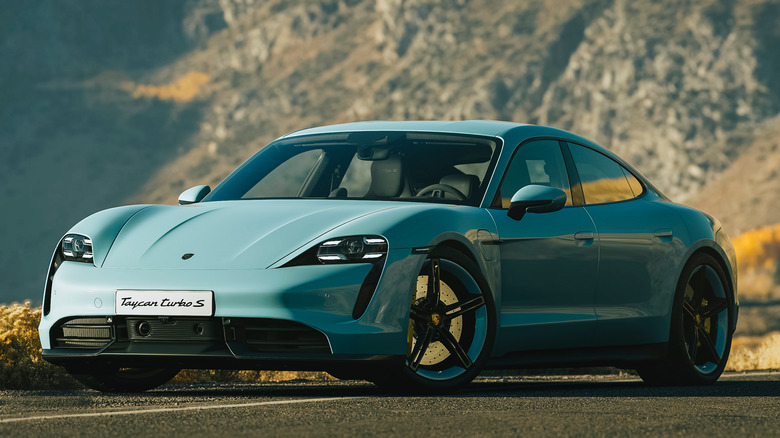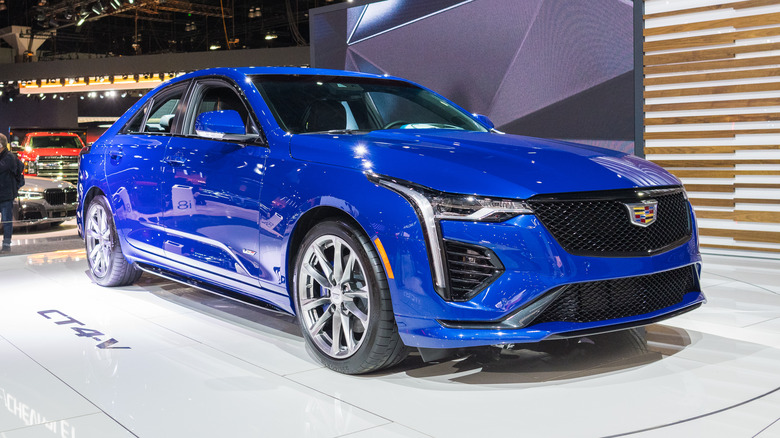5 New Cars You'll Probably Never Get A Good Deal On
New cars can often come with a sting to your wallet. These vehicles bring top of the line amenities and mechanics to your garage, but a lightly used option will often cost far less. Indeed, a vehicle that's only a year old is worth roughly 20% less than it was new. Still, roughly 13.8 million new cars were sold in 2022 (in what's considered a "bad" year for the automotive industry).
If you're looking for something to replace your existing vehicle, the choice between buying new or used is one of the most important factors in the equation. While older vehicles will surely offer a discounted price, you can never be completely certain of potential quirks or problems that might come with the vehicle.
New car sales are immensely tempting for buyers. Interestingly enough, while most buyers choosing new cars are between 25-54 years old, the income demographics suggest that both earners taking home less than $50,000 per year, and more than $100,000 per year, are essentially just as likely to purchase new. Earners falling between these margins make up a much smaller sliver of the pie, regardless of vehicle type.
If you're looking for a deal on a new car, doing your homework is essential. Local dealerships around the country will include their own markups over the MSRP (with an average across the board at 8.8%), but some cars are plagued by even more drastic price hikes.
Genesis GV70
The Genesis GV70 is a workhorse of a vehicle: the SUV is beautifully designed, and enjoys quality fuel economy performance (an EPA estimated 22/28 city/highway miles per gallon). Genesis GV70s have a starting MSRP of $43,150, but the average price tag that a buyer will see at their local dealership sits at $56,476 (a $13,326 and 26.75% markup over the suggested retail price).
The GV70 comes standard with a 300 horsepower engine, but also offers an upgraded 375 horsepower, twin-turbo V6. Either engine platform is paired with an eight-speed automatic transmission and an integrated Launch Control feature that regulates power output for maximum performance at all times. GV70s also include an array of sensors and cameras to help minimize the threat of an accident.
These power a bevy of safety features to make your drive is as uneventful as possible each time you get behind the wheel. Safe Exit Assist alerts you to approaching vehicles as you look to step out of the car, and Forward Collision-Avoidance Assist warns drivers of stationary objects ahead and will engage the brakes.
These are high quality features, to be sure, but they come packaged in a vehicle that's saddled with the highest average markup of any vehicle in the U.S. marketplace. If your heart's set on a Genesis, just know that you'll likely be paying dearly for it.
Jeep Wrangler
Second-highest dealer markup is with the Jeep Wrangler, receiving a 21.4% average markup. Wranglers have an average MSRP of $35,827, but have a baseline suggested retail price of as little as $31,195. On average, these Jeeps sell for $44,396, raising a buyer's purchase price by $8,596 — a 19.36% markup.
Jeeps are a perennial favorite within the U.S. marketplace, and the Jeep brand is Fiat Chrysler's best-selling property. However, with all the innovation and success that Jeeps have enjoyed through the years, there's a steep price tag that's often tacked on after the cars have been delivered to the dealership.
Because they are so often found in high demand, Jeeps sell for a significant markup over the baseline MSRP. For this additional cash, the Jeep Wrangler can be purchased in a wide range of configurations (including the iconic half-door Jeep setup). Jeep is also offering the Wrangler in an EV configuration with the Jeep Wrangler 4xe, so there are plenty of options.
Wranglers are infinitely customizable, with varying engine options that include a 6.4L HEMI V8, a PHEV configuration sporting a 2.0L Inline four, and a 3.6L Pentastar V6, to name a few. In the Pentastar engine, drivers will enjoy engine start/stop functionality to save on gas mileage while sitting in traffic, and a max horsepower rating of 285. With this V6, Wrangler owners can tow up to 3,500 pounds as well. Wranglers are also gifted with 4X4 drive pedigree.
Mercedes-Benz GLB
Another SUV, the Mercedes-Benz GLB is a spacious vehicle that seats up to seven people. The vehicle includes a touchscreen display, as well as backup cameras and sensors to help you navigate parking with complete clarity. The vehicle is powered by a 2.0L inline four engine that produces 221 horsepower and 258 foot-pounds of torque.
The engine is paired with an eight-speed transmission with four dynamic driving modes for any terrain or grade you may be facing. The newest GLB models also come packed with voice commands and even gesture controls that can make your driving experience all the more inviting and enjoyable.
For these features, however, you're likely to fork over a pretty penny. The Mercedes-Benz GLB starts at an average MSRP of $41,061 and sells for an average price tag of $50,452 (a hefty 20.5% upcharge). This comes out to a price hike of $9,391. Mercedes famously delivers luxurious cars without fail to consumers, but for the privilege of driving away in a new Mercedes, you're almost certainly looking at a substantial markup that can't be avoided.
Porsche Taycan
Porsche is another major player in the luxury auto market. The Taycan is an EV (the first fully-electric vehicle from Porsche), and sports an EPA estimated range of 242 miles (or 282 with a "Performance Battery Plus" upgrade). The Taycan does 0-60 in 5.1 seconds, aided by the vehicle's integrated Launch Control feature. As well, Porsche's take on EVs isn't a departure from the brand's performance pedigree, as the Taycan sedan model offers 402 horsepower.
The Sport Turismo Taycan (the most powerful trim) loses some range (down to 233 miles on a full charge), but adds tremendously to the speed and power output from the electric motor setup. The Taycan GTS Sport Turismo produced 590 horsepower and can accelerate to 60 miles per hour in 3.5 seconds.
For this immaculate beauty and ingrained performance, however, buyers will be facing a steep price hike. The Taycan comes with an average MSRP of $100,169, while retail prices for the vehicle average around $122,940. That's a 20.4% increase, and an added cost of $22,771.
To put this in perspective, new Taycan buyers are likely spending enough on the added dealership price alone to buy one of many other new 2023 vehicles on the market; including a Mitsubishi Mirage, Kia Rio, or Hyundai Elantra.
Cadillac CT4-V
Last on this list is the Cadillac CT4-V, and Cadillacs are notoriously difficult to gain resale value from. They often require expensive repairs due to the specialized parts and expertise required to work on them, and buyers are enticed to purchase newer models over older, second-hand Cadillacs because of the constant improvements being made.
This means that Cadillacs will depreciate quickly, and coupled with the substantial markup that CT4-V buyers are likely to experience, they take quite a commitment to own. In this case, the CT4-V has an average MSRP of $57,737, and sells for an average dealership price of $68,240. That's a markup of $10,503, and a difference of 19.1%.
The standard model runs on a 2.7L turbocharged inline four engine and a 10-speed automatic transmission. The car produces 325 horsepower and 380 foot-pounds of torque. All of this results in a top speed of 156 miles per hour, and a 0-60 acceleration time of 4.8 seconds.
The upgraded Blackwing model boosts these performance metrics substantially. They sport a "Cadillac-exclusive twin turbocharged V6" engine measuring 3.6L. This is paired with either the standard 10-speed automatic, or a 6-speed manual transmission. Torque and horsepower are massively increased in the Blacktail configuration, rising to 445 foot-pounds of torque and 472 horsepower, respectively. The top speed reaches above 189 mph, and the 0-60 time reduces by nearly a full second, clocked at 3.9 seconds.

